Adding a Receiver and Speakers to a Ford F-150
Our Car Stereo Proving Ground Series, Part 1

Putting car audio to the test
We wanted to answer the most basic question about car audio: is it really worth it to upgrade? With the help of the Crutchfield Labs, we set out to prove just how much better music sounds when it’s played through a high-quality aftermarket system. We planned to test incrementally as we upgraded, all the way from a typical factory system to one with all the bells and whistles.
Round one: receivers and speakers
For our first round of testing, we chose to compare the output of a factory system to the sound from three common combinations of aftermarket gear:
- A factory receiver with aftermarket speakers
- An aftermarket receiver with factory speakers
- An aftermarket receiver with aftermarket speakers
Ultimately, our goal was to evaluate sound quality step by step, from a typical factory system all the way up to an advanced sound system complete with amps and subs.
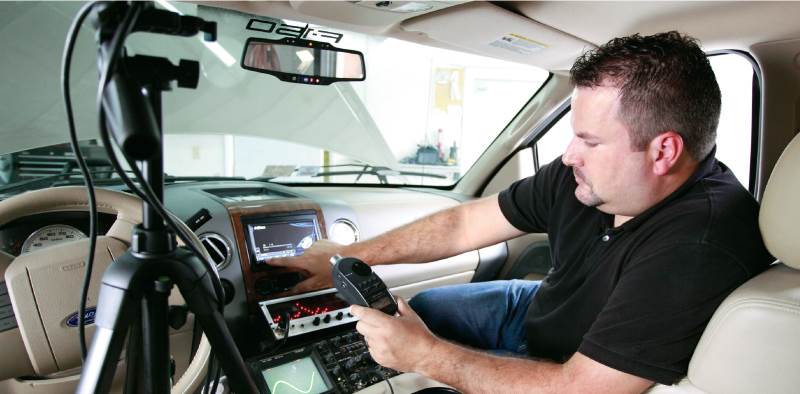
Testing methodology
Jeff, Crutchfield’s Senior Car Merchandiser, led our series of experiments and used his 2004 Ford F-150 for the project. For each scenario, we gathered data using an oscilloscope, a Real Time Analyzer (RTA), a Sound Pressure Level (SPL) meter, and Jeff’s trained ear. The first three gave us objective scientific data from which we could draw our conclusions, while the fourth method — our expert’s opinion — helps describe the listening experience.
Watch Jeff analyze the sound:
The tools were fun to use. For the uninitiated, here's how each one helped us gather data for the project:
- Oscilloscope: used to determine max volume. The first thing we needed to know was how far we could turn up each receiver before it started "clipping," or distorting. We used an oscilloscope, which lets you see a visual representation of a sound wave.For each one, we played several different test tones and turned the volume up until the wave clipped — became square at the top — then dialed it back just until the wave was nice and round again. That let us know where to set the volume for each test.
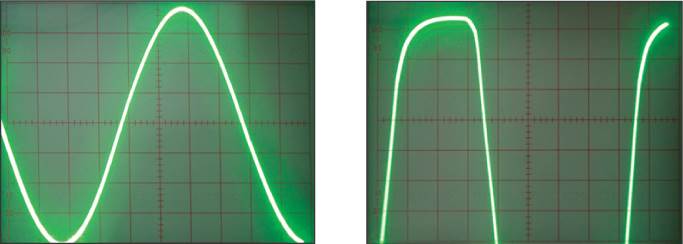
A nice, round soundwave (left) is a good thing; a clipped wave (right) is not
- SPL meter: Sound Pressure Level (SPL) told us how loud the system was playing. Every 3-decibel increase means double the intensity. We measured the SPL at each system’s max, non-distorted volume.
- RTA (Real Time Analyzer): We employed a Real Time Analyzer to measure and display exactly how well each system played the entire musical frequency spectrum. Then we compared the results against an ideal. Jeff's ideal curve can be seen below:
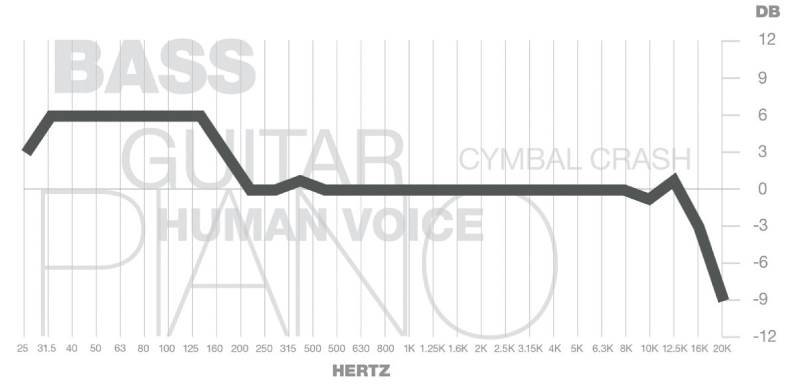
This represent's Jeff's ideal sound curve, one that helps overcome some of the limitations that appear when you listen to music in a moving vehicle.
Have we achieved a wide stereo soundstage?
We leaned on Jeff’s ear to evaluate the soundstaging — he has 20 years of experience building car audio systems, and even trained as an opera singer. He listened to a music track after every test to determine where it seemed like the sound was coming from.
Ideally, it should sound like the band is on stage in front of you on the dash, just beyond the windshield. It creates the sensation that the music starts just outside the car. Look for the diagram below after each test to see how our soundstage started to shape up.

You’re in the driver’s seat. On the left, you’ll see how the staging sounds vertically; obviously you don’t want it down on the floor. On the right, you’ll see the depth of the stereo image; you want it coming from beyond the dash, like you’re in the front row at a concert.
Jeff’s Happiness Level (JHL)
Finally, we employed a 5-smiley system to graphically represent Jeff’s impression of the soundstage at each level of our test. Our goal was to make him super happy.

Testing the factory receiver and speakers
We started our series of tests with the factory stereo and speakers of the F-150 to serve as the basis of comparison for each stage of our project. We hoped to prove that the simple additions of an aftermarket receiver or speakers (or both) make a big difference in sound quality...and how much you enjoy your time in the car.
Ford F-150 factory system
The F-150 is the top-selling vehicle in the U.S., so there are a lot of people who know what the factory-installed stereo sounds like. You can ask one of them, or trust us: it can sound a lot better.
Here's how the sound curve looked:
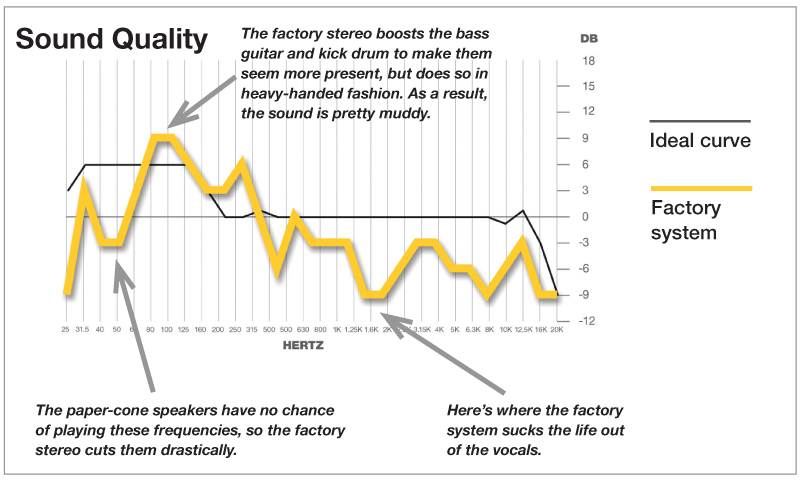
And here's how Jeff felt the soundstage shaped up:

"With this factory system, it’s obvious that the tunes are coming from the doors. We’d like that sound to be up on the dash. Otherwise, there’s just no sense of depth."
Factory stereo results
SPL | JHL | ||
| |
|
Adding and testing aftermarket speakers
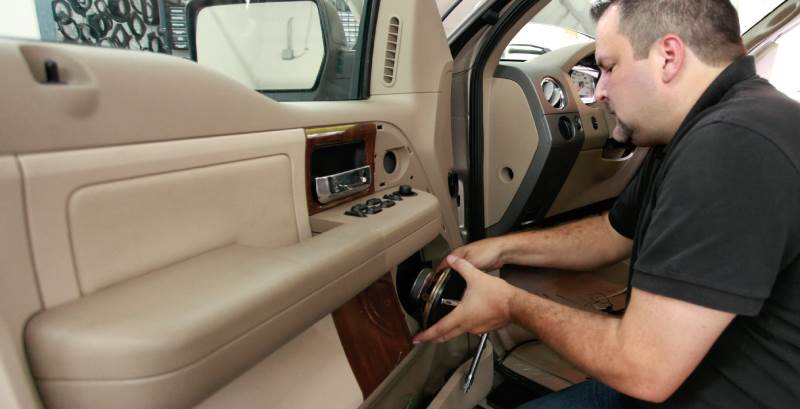
We anticipated that swapping paper-cone factory speakers for a set of well-built aftermarket speakers would make a huge difference — introducing a high-quality tweeter alone should make it worth it. Jeff chose the popular Polk Audio DXi570 speakers because they have excellent sensitivity and are a perfect fit in the F-150 (note: the DXi570 is no longer available, the replacement is the DB 572). So what happened?
Here's the sound curve:
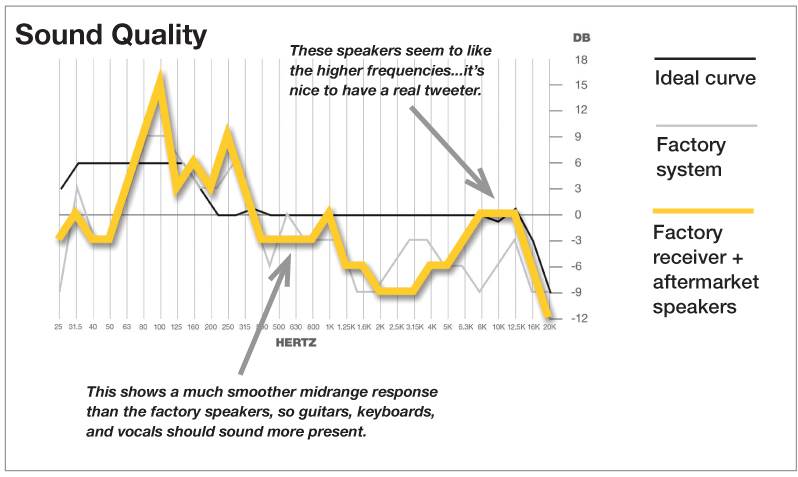
And here's Jeff's interpretation of the sound curve:

"The image is definitely higher now, off the floor. It’s also moving more toward the center — especially noticeable with the highs. The factory receiver is still sabotaging the low frequencies, though."
Factory stereo/aftermarket speaker results
SPL | JHL | ||
| |
|
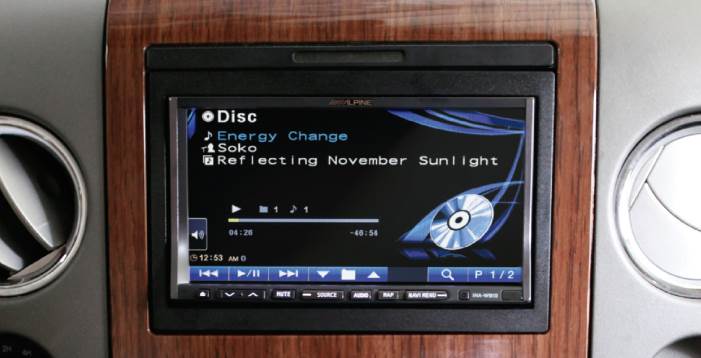
Alpine INA-W910 receiver
Jeff chose the Alpine INA-W910 receiver primarily for its sound quality, an Alpine hallmark. It steps up the continuous power from the 5-10 watts of the factory receiver to a robust 18 watts per channel. It also offers fun features like built-in navigation, Bluetooth®, and HD Radio™.
Adding and testing an aftermarket receiver
Next we put the factory speakers back in and installed an aftermarket receiver. We wanted to get an answer to a question a lot of people ask as they begin to upgrade: if I have the budget for either a new receiver or new speakers — but not both at once — what should I do first? And how much difference does an aftermarket receiver really make in the sound-quality department?
Here's the sound curve:
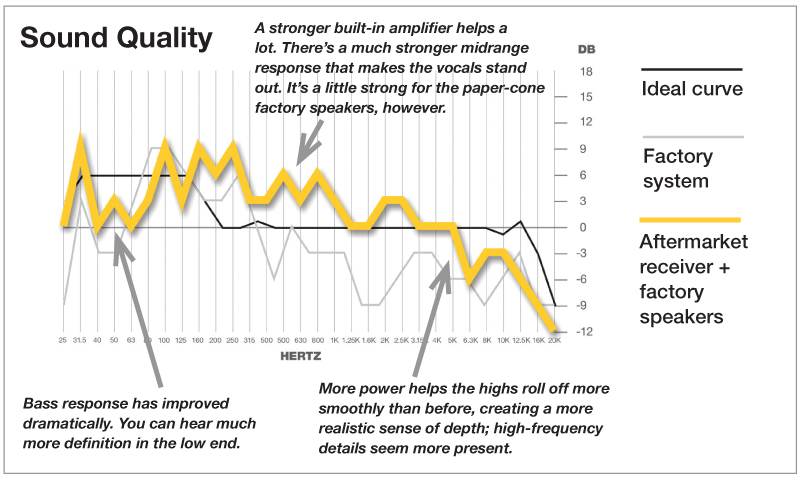
Jeff's description of the soundstage:

"The jump in power helps a lot here. The overall image is heading toward the center, and it’s climbing off the floor. We’re not all the way there yet, but this marks a noticeable improvement from a factory system."
Aftermarket stereo/factory speaker results:
SPL | JHL | ||
| |
|
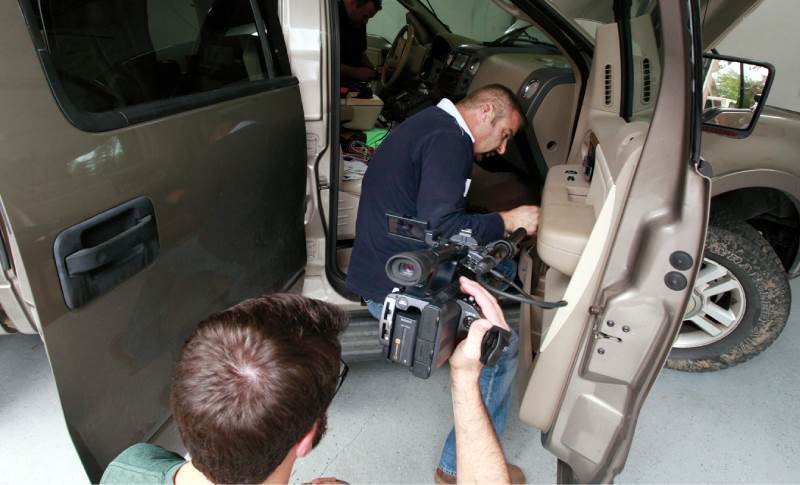
Testing the aftermarket receiver & speakers together
You’d expect a big jump in sound quality when you trade a factory system for a new aftermarket receiver and a pair of front speakers...and you’d be right. But just how much better sound can you expect from a relatively simple upgrade?
Check out the sound curve:
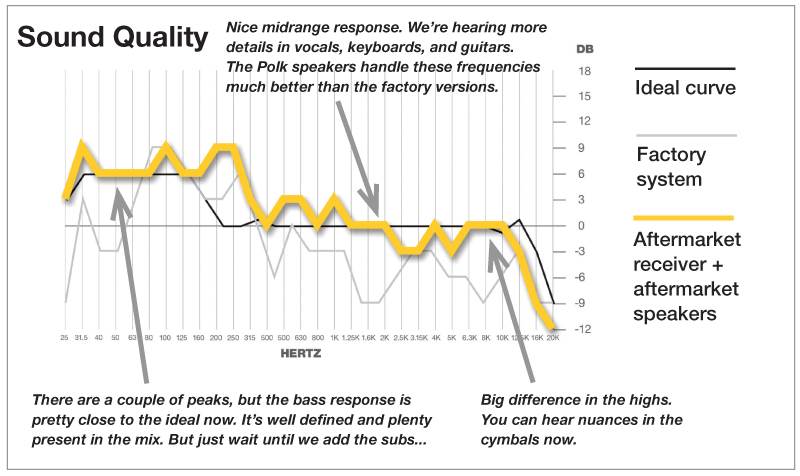
And here's how Jeff described the soundstage:

"Bass is better defined, and highs are more realistic. The image is higher and has more depth than the factory system. The overall image is moving more toward the center. It’s not perfect, but it’s a vast improvement."
Aftermarket stereo & speakers results
SPL | JHL | ||
| |
|
What we've learned so far:
Based on sound quality, we feel comfortable recommending that if you have to choose, you should install an aftermarket receiver as the first step in your car audio transformation. Some of us thought that speakers might have been the logical first step, but the RTA showed us something different. That’s why we test things in the Crutchfield Labs.
The numbers don’t lie
It’s one thing to offer an informed opinion about car audio...and it’s quite another to offer an informed opinion backed up with data. Our mission is to give you as much info as possible while you’re shopping for gear — because in the end, we want you to be happy with your stereo system.
Learn more
Check out Part 2, where we add amps and subs to the mix.
In Part 3, we add processors and some other upgrades.








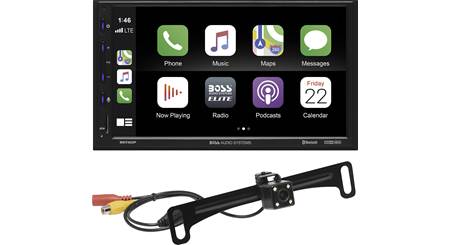

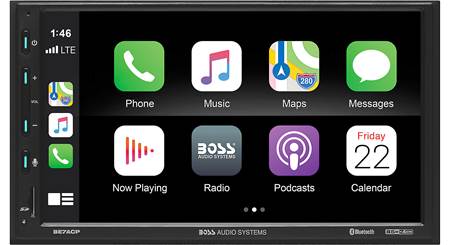
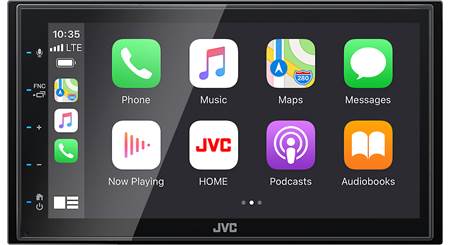
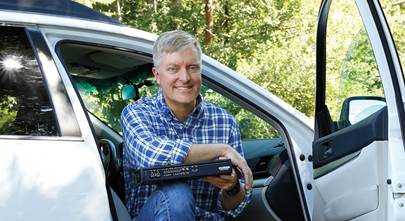


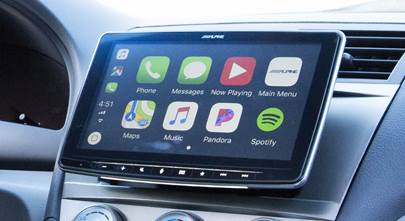
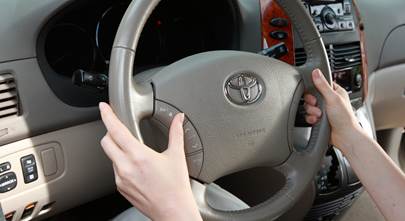
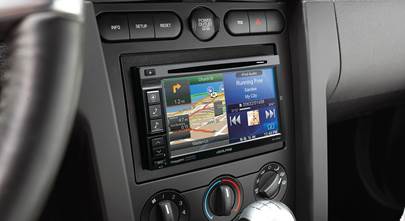

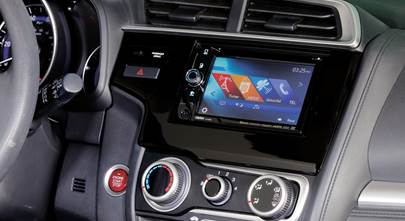
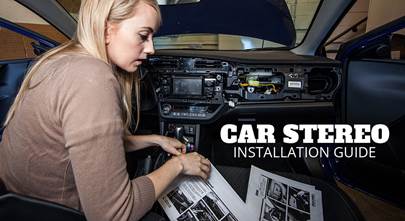
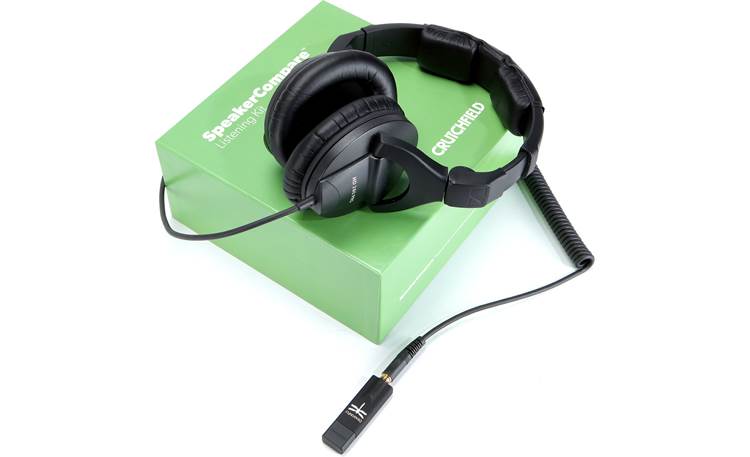
Comments (0)
Please share your thoughts below.